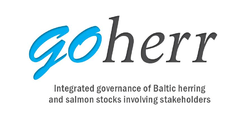Goherr: WP3 Scenarios and management objectives
This page is a encyclopedia article.
The page identifier is Op_en7152 |
|---|
| Moderator:Arja (see all) |
|
|
| Upload data
|
Summary of workpackage
| Work package number: | WP 5 | |||||
| Start date or starting event: | Month 1 | |||||
| Work package title: | Linking the health of the Baltic Sea with health of humans: Dioxin | |||||
| Activity Type: | RTD | |||||
| Participant number | 2 | 4 | 3 | 5 | 1 | |
| Participant short name | THL | SLU | IFM-AAU | UOULU | UH | |
| Person-months per participant | 16 | 13 | 0 | 2 | 8 | |
Contact information
| Name | Institution | skype | phone | Responsibilities | ||||||||
|---|---|---|---|---|---|---|---|---|---|---|---|---|
| Timo P. Karjalainen | Thule institute, University of Oulu | timo.p.karjalainen@oulu.fi | +358 | PI; WP3 leader | ||||||||
| Simo Sarkki | Thule institute, University of Oulu | simo.sarkki@oulu.fi | Mia Pihlajamäki | Thule institute, University of Oulu | mia.pihlajamaki@gmail.com |
DoW
Objectives 1. Define objectives for integrated salmon and herring policy 2. Define pathways for reaching the objectives 3. Build exploratory future scenarios for eutrophication and dioxin input in the Baltic Sea, and for the use of Baltic herring and salmon
Tasks
- 5.1 Effects of fishing on bioaccumulation of dioxins in herring (SLU) (M36)
Use the herring-salmon-dioxin model from WP4 to analyze the effect of different fisheries, parameterized to mimic current Baltic Sea herring fisheries aimed for food consumption or industrial use, leading to positively, negatively and neutrally size-selective fishing mortality, respectively, and study their differential impact on bioaccumulation, individual life history, population and community structure.
- 5.2 Herring fishing to reduce dioxin in salmon and herring (SLU) (M36)
Investigate alternative management schemes aiming to minimize bioaccumulation of dioxins in herring and salmon by systematically varying the level and size-selectivity of fishing mortality on herring in the novel herring-salmon-dioxin model from WP4.
- 5.3 Determinants of fish eating habits (THL, UH, UOULU) (M22)
The impact of different eating habits (demand of different sizes of herring) on the state of the fish stocks and finally the Baltic Sea will be examined. Also, determinants (such as age and knowledge about dioxins or recommendations) and trends in people’s eating habits will be studied by using a questionnaire targeted to a large sample of consumers in selected case studies (different Baltic Sea countries). The results will be used in the scenario modelling related to the use of herring and salmon in WP3, and finally in the Decision Support Model of WP6. The analyses will help to understand how improved information for consumers may impact the consumption, and health benefits and risks related to the consumption.
- 5.4 Benefit-risk assessment of previous, current and future fish intake (THL) (Month 34)
THL has recently collected data about previous and current fish consumption in Finland, especially about Baltic herring. These data will be used to update the estimates about fish intake and also exposures to harmful (dioxin and other persistent pollutants) and healthy (omega-3 fatty acids, vitamin D) compounds in Baltic fish. A probabilistic benefit-risk assessment will be performed to inform policy makers about the health impacts of fish. Further, this assessment will be combined with the results of the other WPs to produce estimates of future health impacts of Baltic fish related to different policy options. These estimates will be used as input in the decision support model built in WP6. A similar assessment will be produced for Sweden using their respective national data about fish consumption.
Deliverables
- D5.1 An open online model about dioxins in fish; human consumption; and health benefits and risks (Month 24). Responsible partner: THL.
- D5.2 Journal publication (submitted): The health benefit-risk model results (Month 34). Responsible partner: THL.
- D5.3 Report/MS: The role of size-selective fisheries on bioaccumulation of dioxins (Month 36). Responsible partner: SLU.
See also
Related files
<mfanonymousfilelist></mfanonymousfilelist>
People: WP leader: Timo P. Karjalainen; Postdoc researcher: Simo Sarkki; PhD Student: Mia Pihlajamäki.
Objectives 1. Define objectives for integrated salmon and herring policy 2. Define pathways for reaching the objectives 3. Build exploratory future scenarios for eutrophication and dioxin input in the Baltic Sea, and for the use of Baltic herring and salmon


